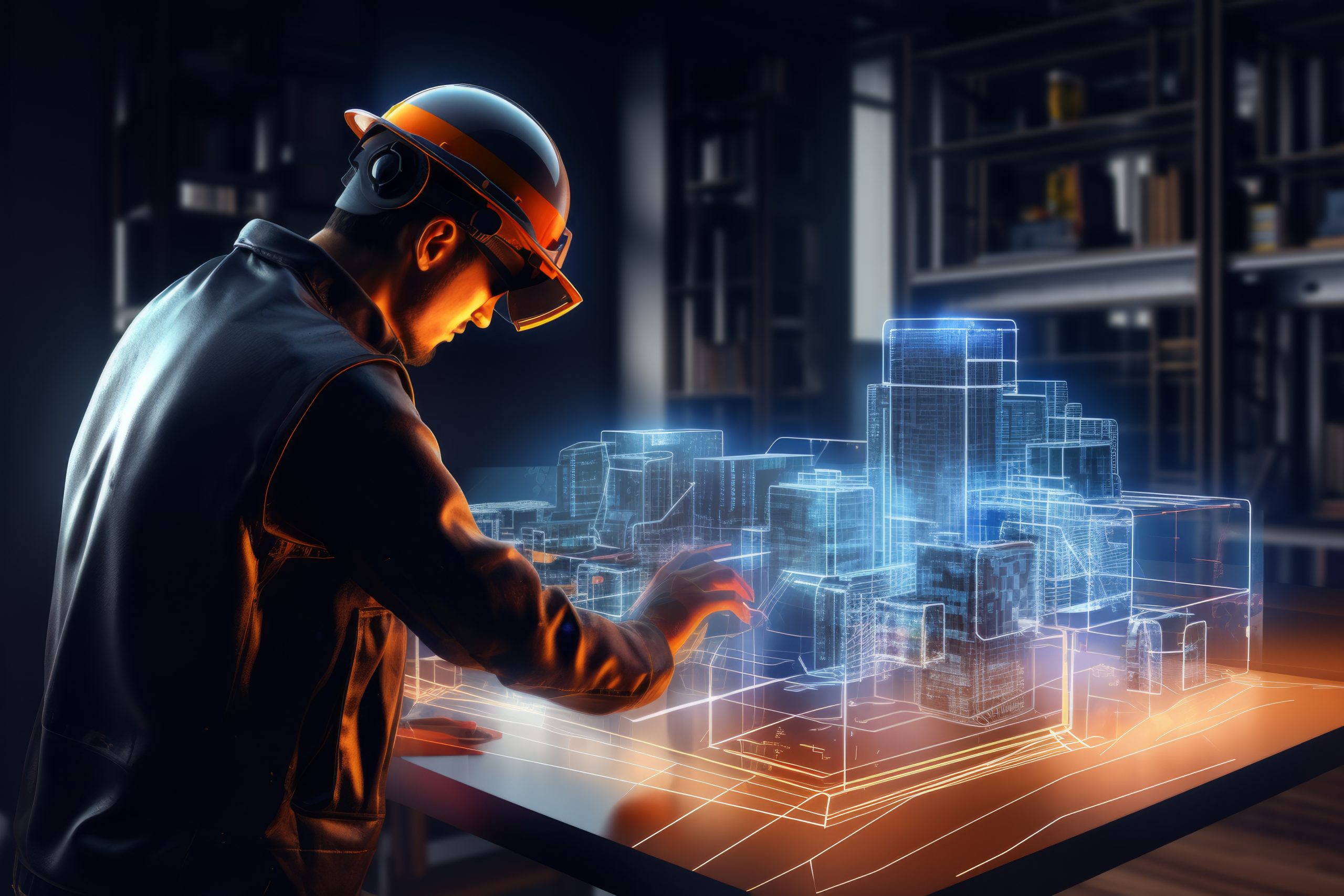
AI vs. Traditional Estimating: Which Construction Cost Estimation Tools Win in 2025?
As a general contractor with decades in the construction industry, I’ve seen it all—projects that blow past budget, bids that underestimated costs by tens of thousands, and clients frustrated before a single nail is hammered. One of the biggest challenges we face? Accurate construction cost estimating.
With 2025 bringing smarter AI construction software and predictive analytics, contractors now face a big question: Should you stick with traditional estimating methods, or embrace AI-powered tools to win bids and save money? Let’s break it down.
Traditional Construction Estimating: Tried, True, but Risky
For years, most contractors relied on traditional methods for estimating: spreadsheets, historical project data, and good old-fashioned experience.
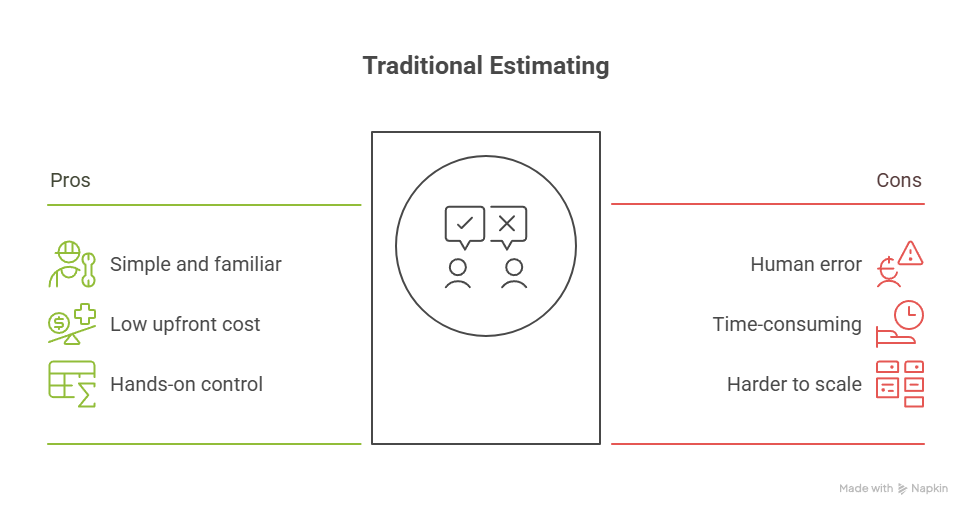
Pros of Traditional Estimating
- Simple and familiar: No learning curve for experienced contractors.
- Low upfront cost: You don’t need software subscriptions or AI platforms.
- Hands-on control: Every number is calculated by you, giving you a personal touch.
Cons of Traditional Estimating
- Human error: Even seasoned estimators miss items, forget contingencies, or miscalculate labor costs.
- Time-consuming: Manually adding quantities, factoring in labor, and revising estimates takes hours—or even days.
- Harder to scale: Managing multiple projects with traditional methods becomes a logistical nightmare.
I’ve managed projects where missing a single line item cost the company thousands. That’s why we started exploring AI cost estimation tools a few years back.
AI-Powered Estimating Tools: The Modern Solution
Predictive AI uses machine learning algorithms to analyze historical data, real-time material pricing, labor availability, and even weather trends to create highly accurate estimates.
How AI Construction Estimating Works
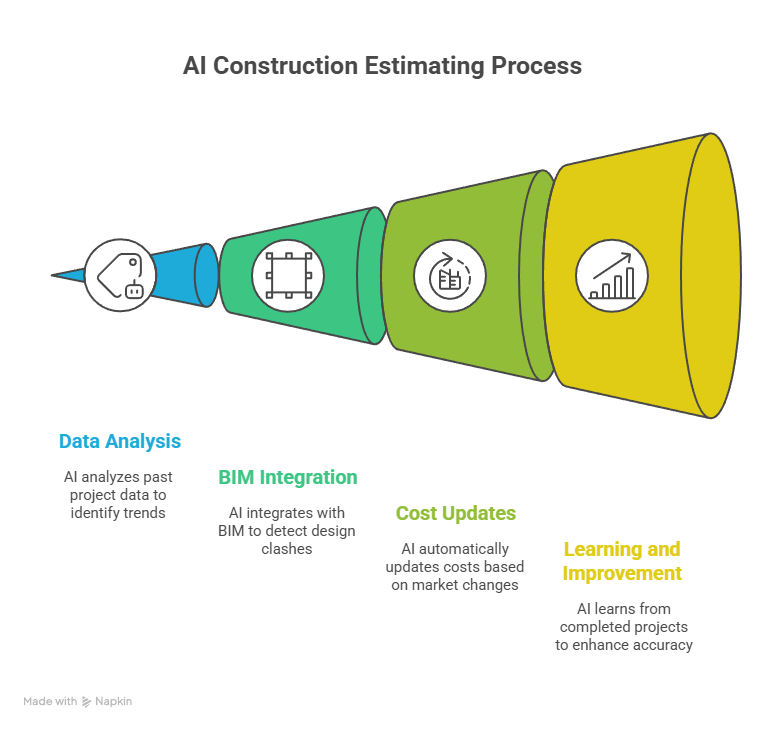
- Pulls data from past projects to predict future costs.
- Integrates with BIM (Building Information Modeling) to detect potential design clashes.
- Updates automatically when supplier prices or labor rates change.
- Improves accuracy over time as it “learns” from completed projects.
Benefits of AI Estimating
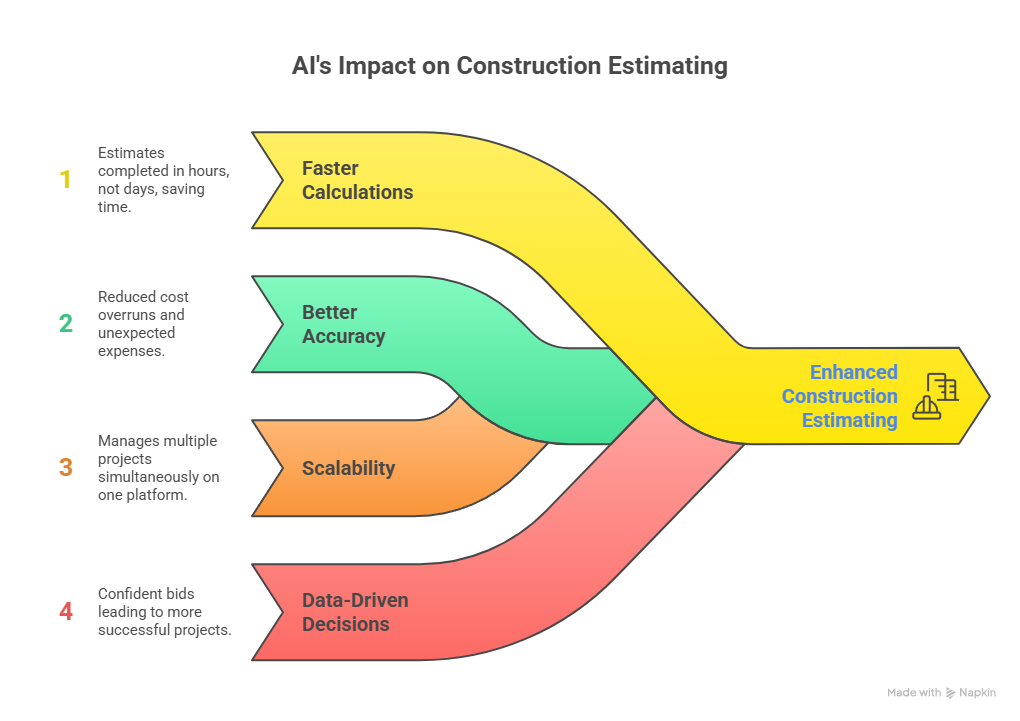
- Faster calculations: Estimates that used to take days are generated in hours.
- Better accuracy: Reduced risk of cost overruns and surprise expenses.
- Scalability: One platform can handle multiple projects simultaneously.
- Data-driven decisions: Contractors can confidently present bids and win more work.
Head-to-Head: AI vs. Traditional Estimating
Let’s compare AI cost estimation tools with traditional methods to see which wins in 2025.
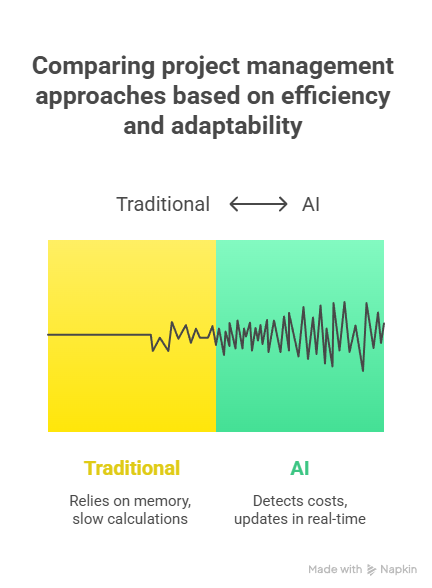
Accuracy
- AI: Detects overlooked costs, flags potential overruns, and reduces human error.
- Traditional: Relies on memory and experience—mistakes happen, especially on complex projects.
Time Efficiency
- AI: Generates estimates almost instantly, even for large projects.
- Traditional: Manual calculations are slow and prone to revision errors.
Scalability
- AI: Perfect for large contractors juggling multiple projects.
- Traditional: Adding projects increases workload exponentially.
Adaptability
- AI: Updates in real-time when materials cost more or labor availability changes.
- Traditional: Static spreadsheets can become outdated quickly.
From my experience, AI tools are clearly winning for projects over $500,000 or with complex design elements. That said, traditional estimating still works for small residential jobs with simple scope.
Real-World Contractor Examples
Here’s what I’ve seen in practice:
- Case 1: On a commercial build, our AI cost estimation flagged a potential $150,000 overrun before we even broke ground. We corrected it in preconstruction and avoided a major headache.
- Case 2: On a mid-size residential project, traditional estimating missed extra labor for foundation work, causing delays and extra costs.
- Case 3: AI-driven integration with BIM helped us identify a ductwork clash with structural beams, saving time and money on a large office project.
When Traditional Estimating Still Makes Sense
AI isn’t perfect for every scenario:
- Small projects with limited complexity.
- Contractors on a tight budget who can’t yet invest in AI tools.
- Projects with insufficient historical data for AI to analyze.

Even so, a hybrid approach—using AI for complex calculations while keeping traditional methods for smaller items—often works best.
How to Choose the Right Estimation Tool in 2025
Here are some tips for contractors looking to make the leap:
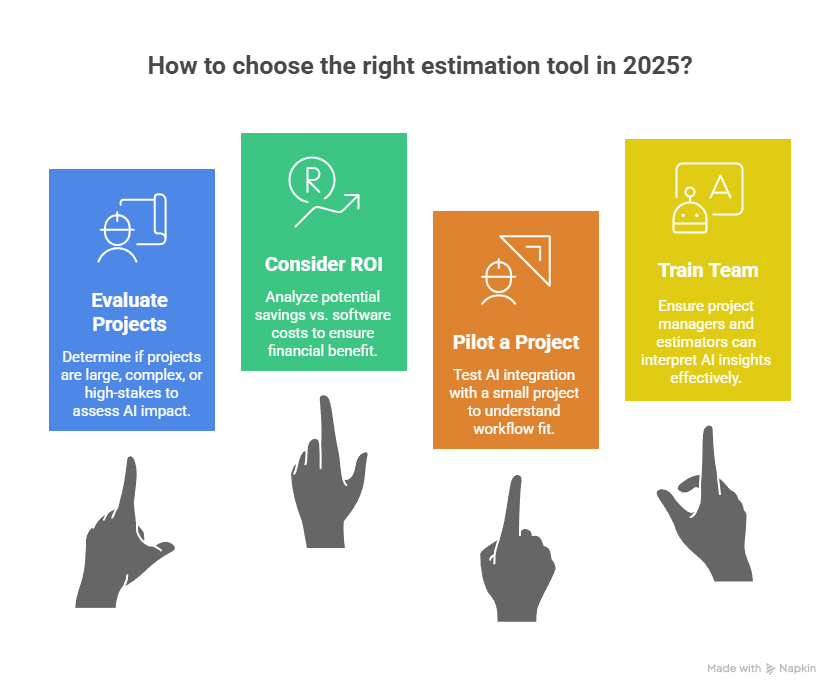
- Evaluate your projects: Are they large, complex, or high-stakes? AI will have the most impact here.
- Consider ROI: Look at potential savings in reduced overruns and faster estimating vs. software costs.
- Pilot a project: Start small to test how AI fits into your workflow.
- Train your team: Make sure project managers and estimators know how to interpret AI insights.
The Future of Construction Cost Estimating
AI is only going to get smarter. Expect:
- Integration with real-time scheduling and supply chain management.
- Predictive analytics for material shortages and labor issues.
- Hybrid workflows combining human expertise with AI precision.
Contractors who adopt AI early will have a competitive edge in bidding, planning, and execution.
FAQs About AI vs. Traditional Estimating
Q: Can AI really replace traditional estimators?
Not entirely. AI supplements human expertise, helping estimators make faster and more accurate decisions.
Q: Are AI estimating tools expensive?
Prices vary, but the ROI from avoided cost overruns and time savings usually offsets the investment.
Q: Is AI estimating only for big firms?
No. Many affordable AI platforms are designed for small to mid-size contractors.
Q: Do AI tools require lots of data?
Yes, clean historical project data improves accuracy, but modern platforms can also learn from smaller datasets.
Who Wins in 2025?
If your projects are large, complex, or high-risk, AI-powered estimating tools clearly outperform traditional methods. For smaller, simple jobs, traditional estimating may still work.
From my experience as a contractor, combining AI insights with human judgment gives the best results: accurate bids, fewer overruns, and happier clients.
Ready to Upgrade Your Estimating?
Don’t get left behind. Exploring AI construction software now can save your firm time, money, and headaches on your next project. Start small, test AI on one project, and watch how much smarter and more profitable your estimating process becomes in 2025.


